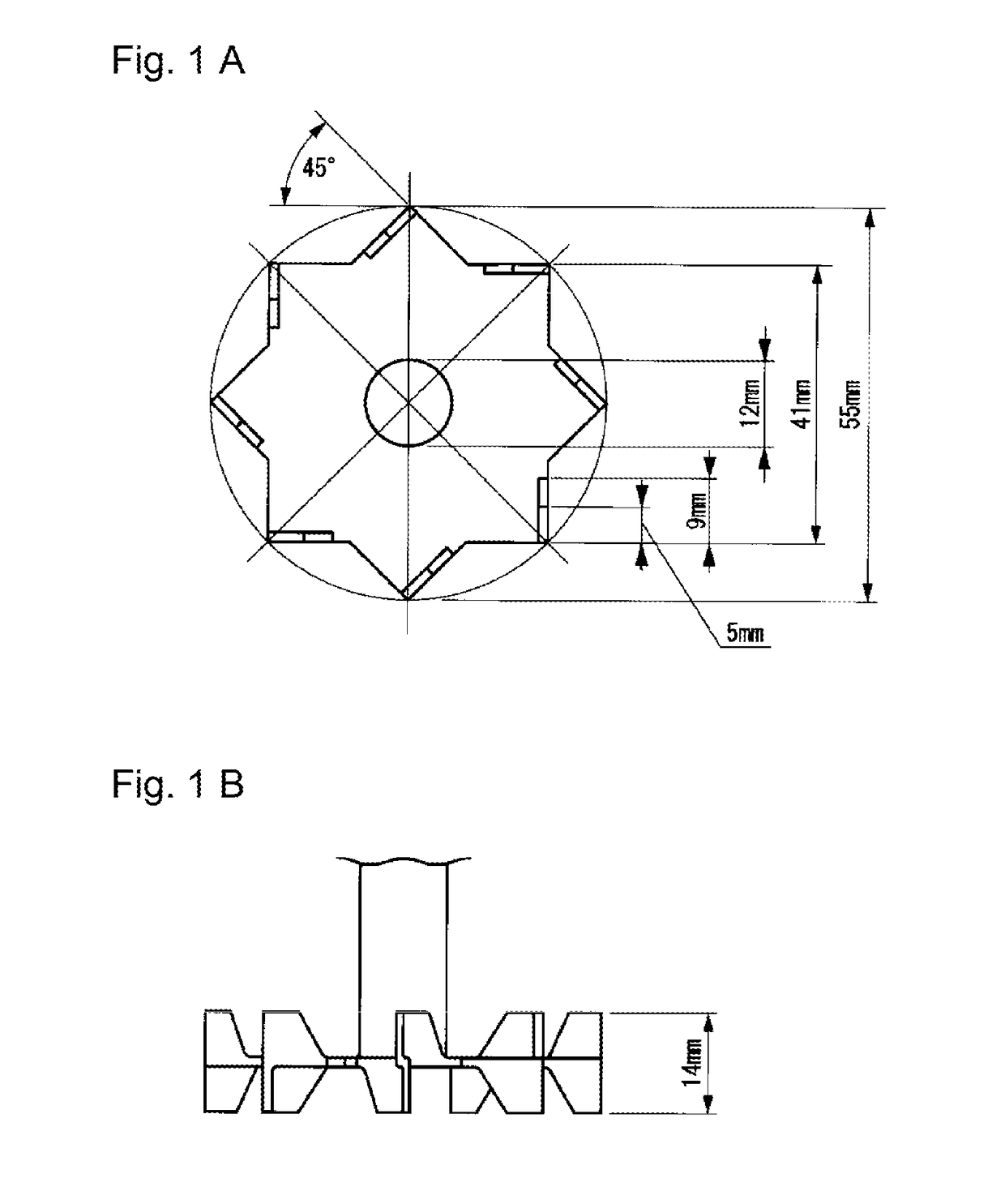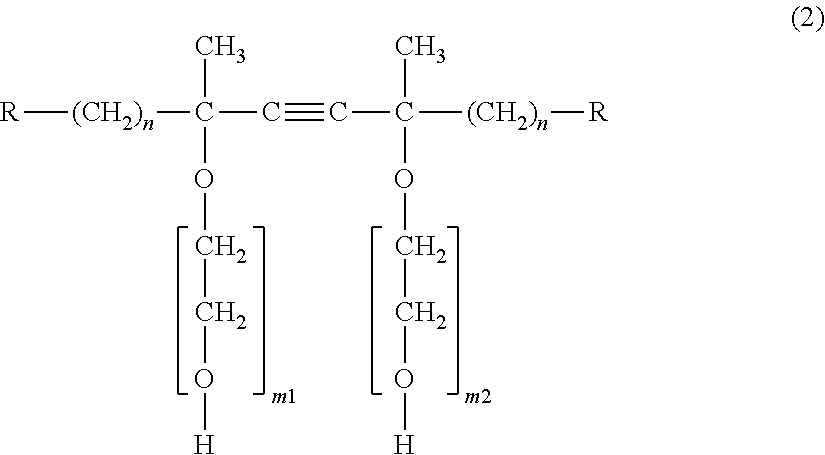Polytetrafluoroethylene aqueous dispersion
a technology of polytetrafluoroethylene and aqueous dispersion, which is applied in the direction of coatings, emulsion paints, etc., can solve the problems of unstable aqueous emulsion, and achieve the effect of excellent mechanical stability and not easy to foam
- Summary
- Abstract
- Description
- Claims
- Application Information
AI Technical Summary
Benefits of technology
Problems solved by technology
Method used
Image
Examples
production example 1
queous Emulsion
[0123]Into a 100 L stainless steel autoclave equipped with baffles and a stirrer, 75 g of the fluorinated emulsifier (1), 924 g of paraffin wax and 59 L of deionized water were charged. After the autoclave was purged with nitrogen and brought to a reduced pressure, 3.5 g of the comonomer (1) was charged. Further, while pressurizing with TFE and stirring, the temperature was raised to 79° C. Then, the pressure was raised to 1.42 MPa with TFE, and 0.2 g of ammonium persulfate and 26.3 g of disuccinic acid peroxide (concentration 80 mass %, remainder being water) were dissolved in 1 L of hot water of about 70° C. and injected to initiate a polymerization reaction. The internal pressure dropped to 1.40 MPa in about 6 minutes. While adding TFE so that the internal pressure of the autoclave was maintained to be 1.42 MPa, the polymerization was continued. At the time when the amount of TFE added after initiation of the polymerization became 3.91 kg, 158 g of the fluorinated ...
example 1
on of PTFE Aqueous Dispersion
[0127]To the aqueous PTFE emulsion obtained in Production Example 1, the nonionic surfactant (1) was dissolved so that the active component would be 3 parts by mass to 100 parts by mass of PTFE particles, to obtain a stable aqueous dispersion. Then, into a 5 L beaker, 5 kg of the aqueous dispersion and 200 g of a strongly basic ion exchange resin (manufactured by Purolite, PUROLITE (registered trademark) A300) were put and stirred at room temperature for 12 hours.
[0128]Further, the aqueous dispersion was filtered by a nylon mesh with a mesh size of 100 and then concentrated by electrophoresis, whereupon the supernatant was removed, to obtain a concentrate wherein the content of PTFE particles was 66 mass %, and the content of the nonionic surfactant (1) was 2.2 parts by mass per 100 parts by mass of PTFE particles.
[0129]To this concentrate, the nonionic surfactant (1) was added so that the amount of the active component would be 2.3 parts by mass per 100...
examples 2 to 8
, Comparative Examples 1 to 5: Preparation of PTFE Aqueous Dispersions
[0132]In Example 1, the compounds added to the concentrate were changed as shown in Tables 1 and 2. Otherwise, in the same manner as in Example 1, the PTFE aqueous dispersion (PTFE high concentration aqueous dispersion) was obtained and evaluated in the same manner.
TABLE 1.[Unit]Ex. 1Ex. 2Ex. 3Ex. 4Ex. 5Ex. 6Ex. 7Ex. 8PTFEContents ofPTFE particles[mass %]60.560.560.560.560.560.560.560.5aqueousmainFluorinated emulsifier (1)[ppm / PTFE22222222dispersioncomponentsparticles]Nonionic surfactant (1)[parts by mass / 1004.54.54.54.54.54.54.54.5parts by mass ofPTFE particles]Compound (A1)[parts by mass / 1000.25—0.5—1.0—1.50.1Compound (A2)parts by mass of———1.0————Compound (A3)PTFE particles]—0.25———1.0——Compound (B)————————Compound (C)————————Compound (D)————————Compound (E)————————StatesDissolved state of compounds—No undissolved residueViscosity (23° C.)[mPa · s]19.318.718.618.417.129.121.518.9pH (23° C.)—9.709.569.619.489.60...
PUM
| Property | Measurement | Unit |
|---|---|---|
| average primary particle size | aaaaa | aaaaa |
| viscosity | aaaaa | aaaaa |
| mass | aaaaa | aaaaa |
Abstract
Description
Claims
Application Information
 Login to View More
Login to View More - R&D
- Intellectual Property
- Life Sciences
- Materials
- Tech Scout
- Unparalleled Data Quality
- Higher Quality Content
- 60% Fewer Hallucinations
Browse by: Latest US Patents, China's latest patents, Technical Efficacy Thesaurus, Application Domain, Technology Topic, Popular Technical Reports.
© 2025 PatSnap. All rights reserved.Legal|Privacy policy|Modern Slavery Act Transparency Statement|Sitemap|About US| Contact US: help@patsnap.com



